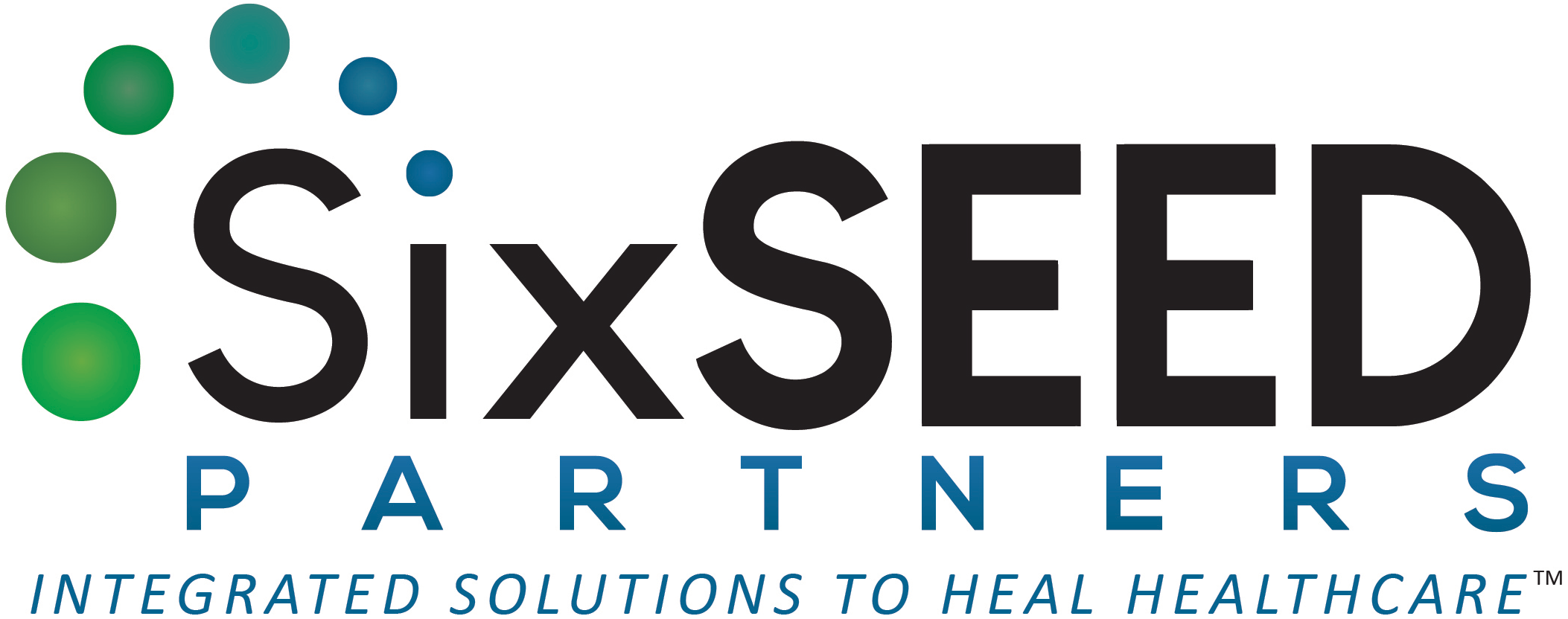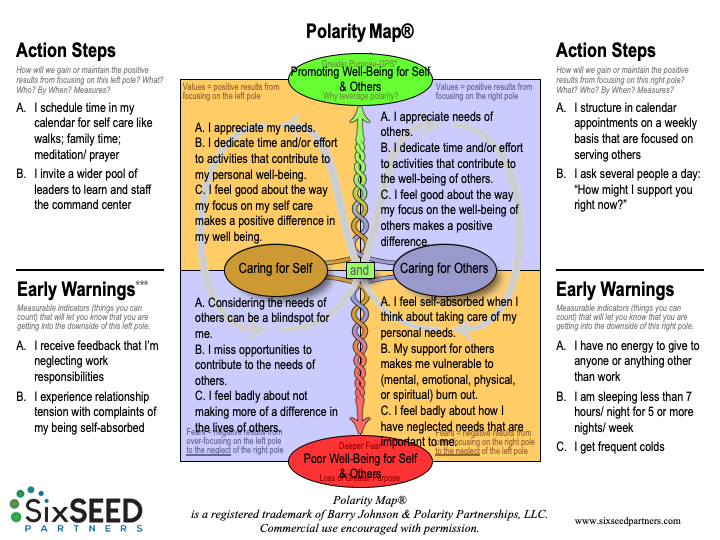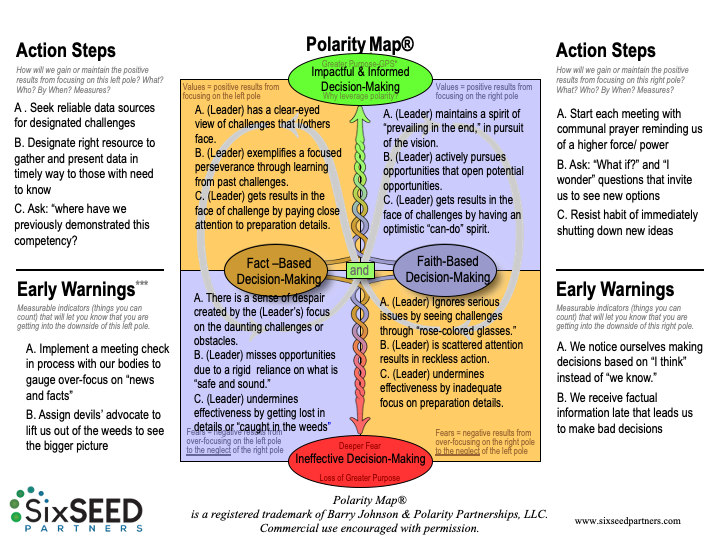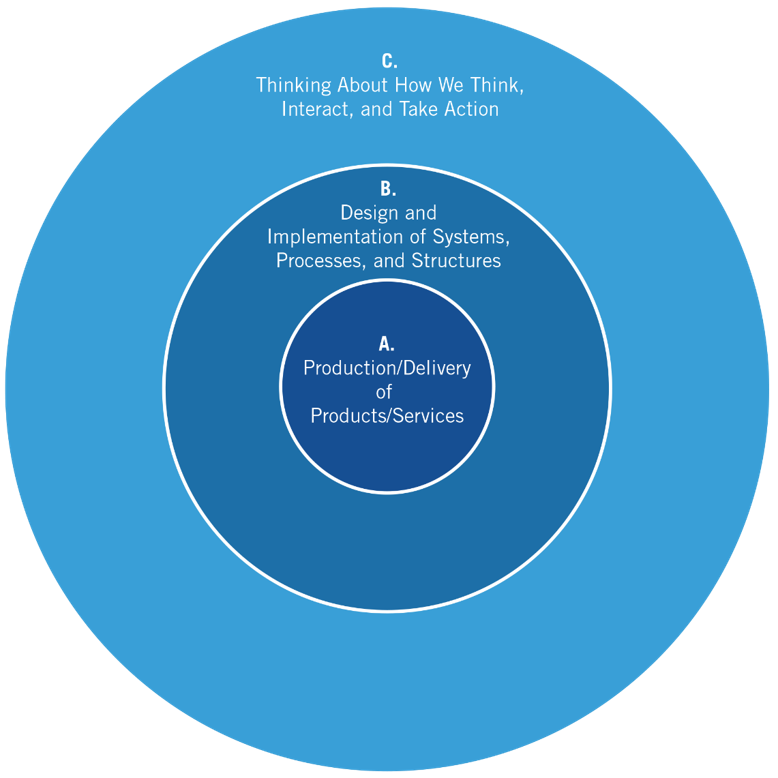This is the fourth in a series on leveraging tensions during this time of the coronavirus. For SixSEED Partners, Covid-19 is a powerful reminder of what already exists in our world which is complex and unpredictable circumstances that can cause much pain and expense unless we learn to take a more systemic view and get comfortable leveraging interdependent tensions. Previously, we covered the paradoxes of:
- Leveraging Facts AND Faith
- Leveraging Staying Present AND Anticipating the Future
- Leveraging Care for Self AND Care for Others
After hours of speaking with our clients who are on the front lines in hospitals or leading medical practices, the tensions we’re highlighting are coming from them—you. We’re asking questions and staying present to your pain points, that, in already demanding circumstances, is taking additional energy that you don’t have to spare. We want to help make this easier for you, while also increasing your capacity to lead others through this pandemic.
As we coach leaders, we often refer them to the powerful work of David Emerald who wrote: “3 Vital Questions: Transforming Workplace Drama.” This book, along with his other book: “The Power of TED (The Empowerment Dynamic)” describe our tendencies to fall in roles of victim, persecutor, and rescuer. Covid -19 calls on medical professionals and others to play the role of “Hero/ Rescuer” to patients who are sick and/or dying due to the coronavirus. These patients are helpless to fight this battle without medical support.
The tension for leaders occurs when we extend that pattern of playing hero with others in our lives who are quite capable of taking care of themselves and possibly, even acting in a way that may exceed our capacity. How do you determine the essential work that only you can do, as compared with those responsibilities another resource is, or could be, well-prepared to do? If I were to use some of the examples I’m hearing from my clients, I’m impressed with the speed with which others have been trained to staff command centers, or resources have been summoned to expedite operationalizing telemedicine.
It takes a conscious leader to pause during the crisis of reacting to Covid-19, and ask themselves and their teams the following questions:
- “What beliefs did we suspend during this crisis that helped us to be successful?”
- “How might we continue to challenge our former belief structure to allow us to expand our talent pool and create a stronger degree of shared ownership?”
- “What benefits might emerge for our ability to better care for ourselves while we create more powerful engagement for our teams that can help us meet future challenges?”
In the book above mentioned, the second question is: “How are you relating?” During this time of complexity and uncertainty, pausing to notice with curiosity “how you’re relating,” (from what role) in addition to taking action will yield dividends in your future preparedness and increase in systemic well-being.
Below is a polarity map, which outlines this tension of Assuming Responsibility and Delegating Responsibility in service to creating shared ownership for all.
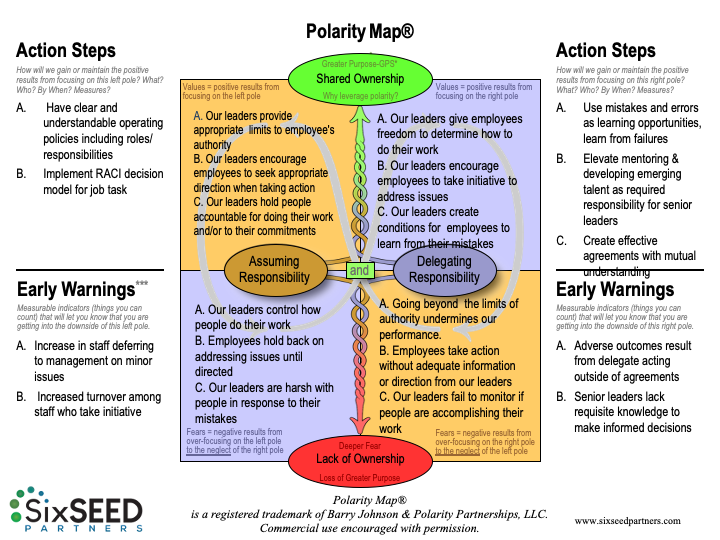
At SixSEED Partners, we are committed to developing leaders who have the capacity to see these interdependent tensions to better lead in this time of uncertainty. We’ve taken the liberty of adding some action steps and warning signs to this map that you can use immediately with your teams.
If you’d like your own editable polarity map to give yourself the systemic view of the tension you are navigating, or if you have questions about how you might use this information now, complete our contact form and we’ll respond within 1 business day.
